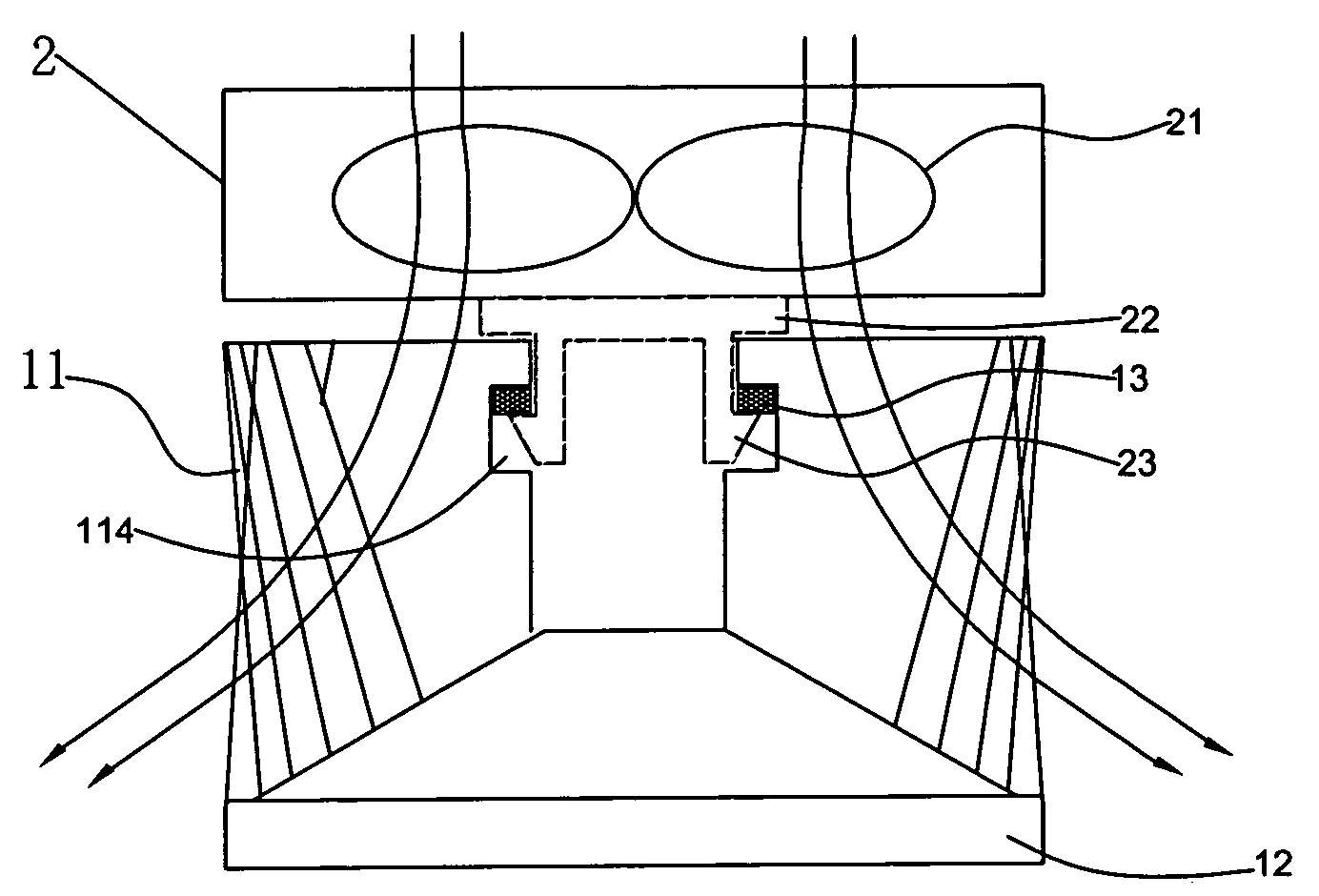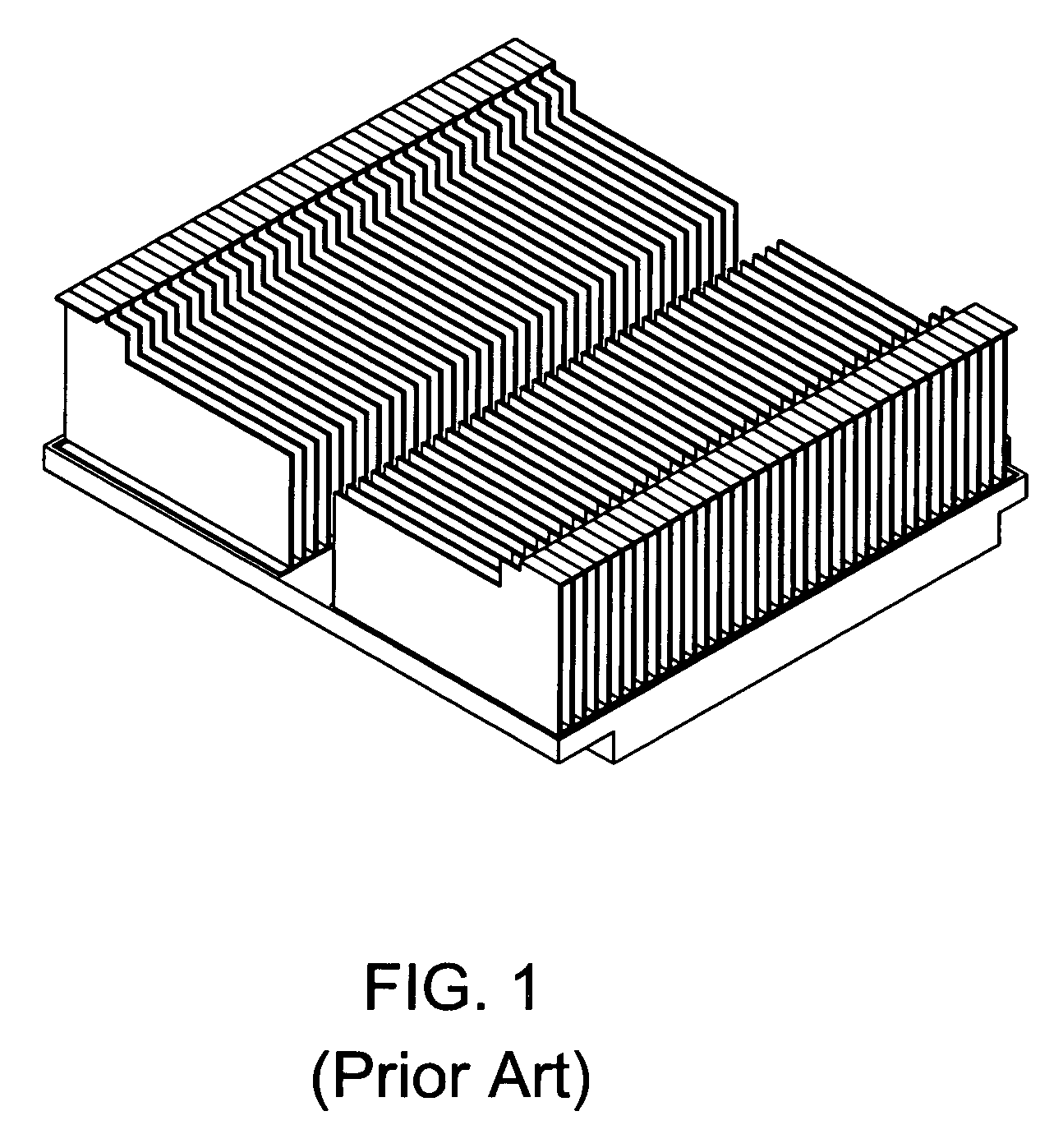Circular heat sink assembly
a heat sink and assembly technology, applied in the direction of fluid heaters, air heaters, lighting and heating apparatus, etc., can solve the problems of low density (total heat dissipating area per unit volume) of heat sinks that combine several heat dissipating fins together, and cannot achieve thin thickness, so as to improve the heat dissipating performance, improve the fan-shaped heat dissipating fins, and improve the effect of heat dissipation performan
- Summary
- Abstract
- Description
- Claims
- Application Information
AI Technical Summary
Benefits of technology
Problems solved by technology
Method used
Image
Examples
Embodiment Construction
[0059]Please refer to FIGS. 4 to 8 for the first preferred embodiment of the present invention. The present invention provides a circular heat sink assembly having a heat dissipating fin with a streamlined curved surface. The circular heat sink assembly comprises a circular heat sink 1 having a plurality of heat dissipating fins 11 with a single streamlined curved surface and being connected to a conical heat dissipating base 12 to form the circular heat sink. Each single heat dissipating fin 11 comprises a main body 111 as shown in FIG. 5, and a side of the main body 111 being coupled to a folded flange 111 on a side and a fan-shaped folded flange 112 at the bottom. Both ends of the fan shape use the same concentric point and different radii to form two arc sections of different lengths and a groove 114 is disposed at the central position of the main body 111 as shown in FIG. 5.
[0060]The plurality of single heat dissipating fins 11 uses a pressing section to tightly align the singl...
PUM
 Login to View More
Login to View More Abstract
Description
Claims
Application Information
 Login to View More
Login to View More - R&D
- Intellectual Property
- Life Sciences
- Materials
- Tech Scout
- Unparalleled Data Quality
- Higher Quality Content
- 60% Fewer Hallucinations
Browse by: Latest US Patents, China's latest patents, Technical Efficacy Thesaurus, Application Domain, Technology Topic, Popular Technical Reports.
© 2025 PatSnap. All rights reserved.Legal|Privacy policy|Modern Slavery Act Transparency Statement|Sitemap|About US| Contact US: help@patsnap.com



